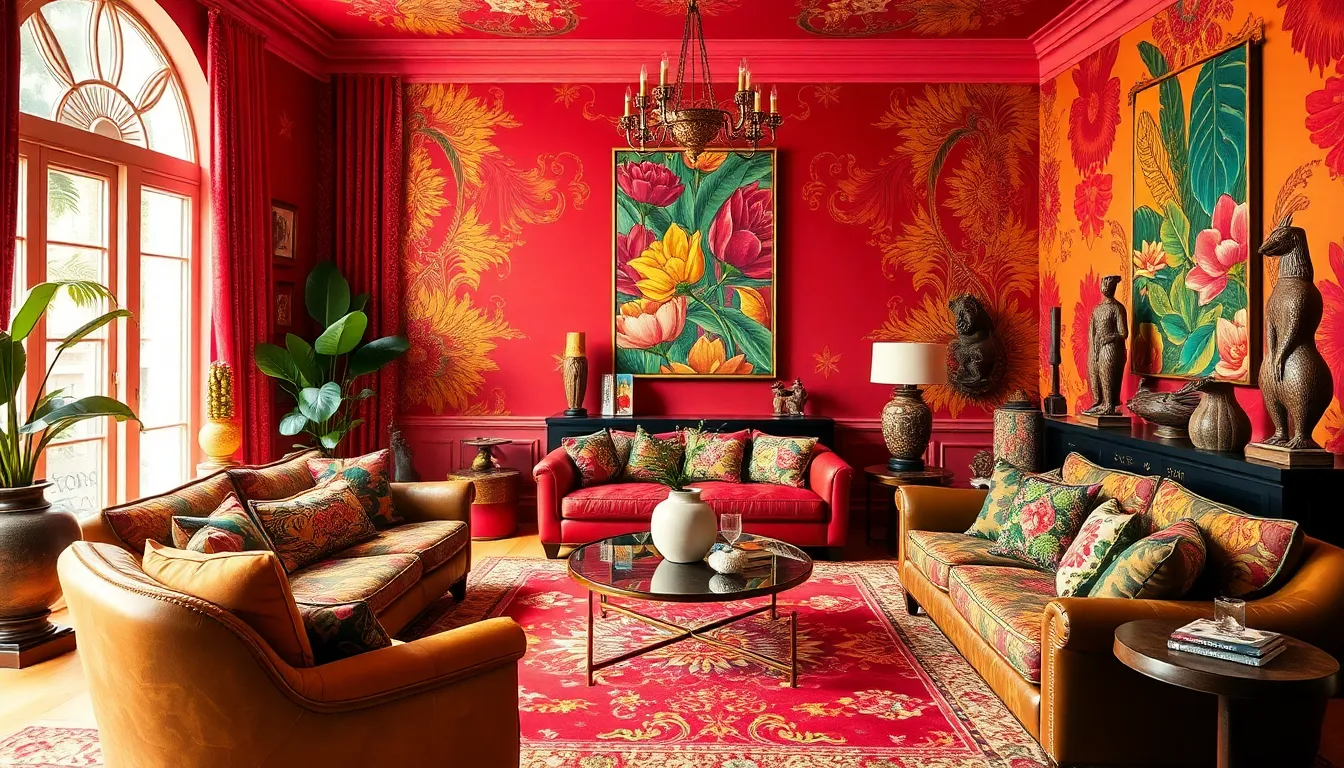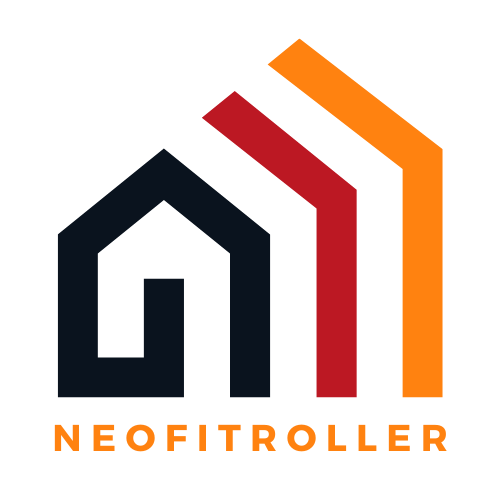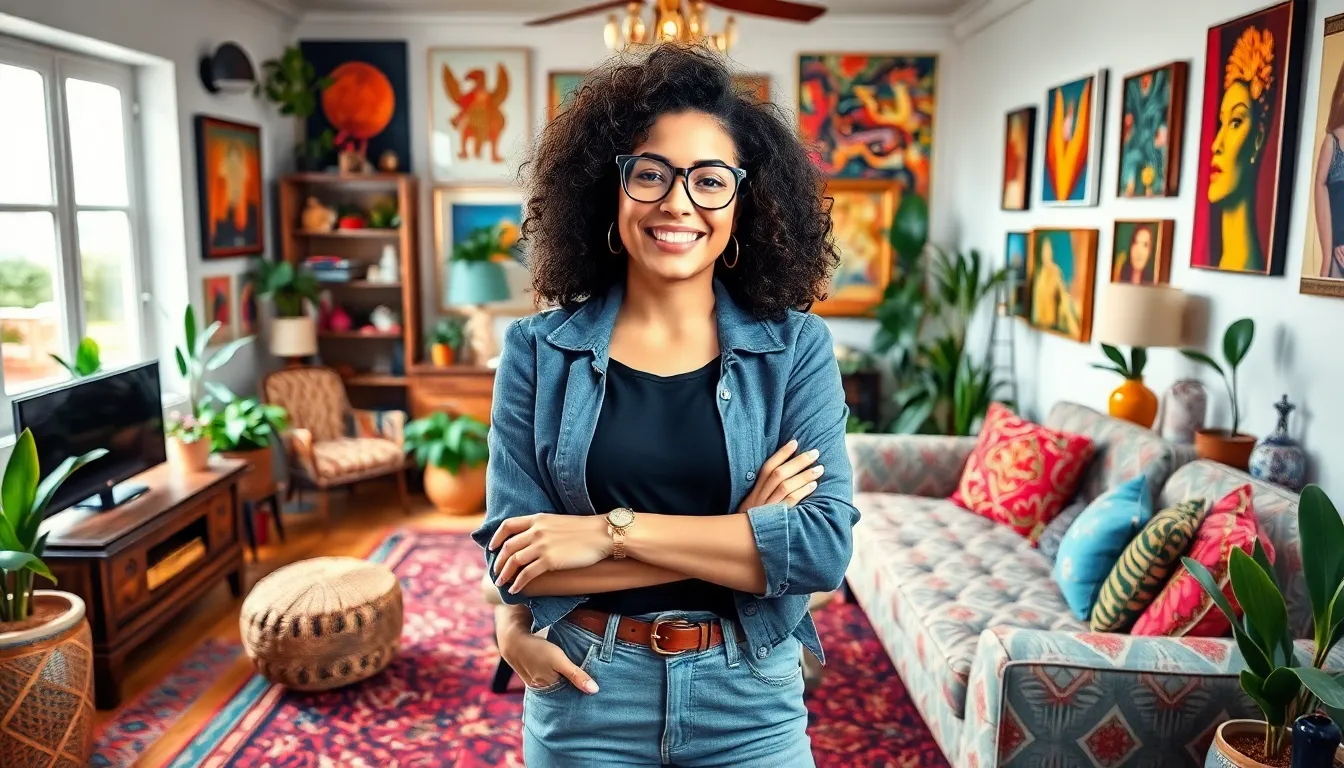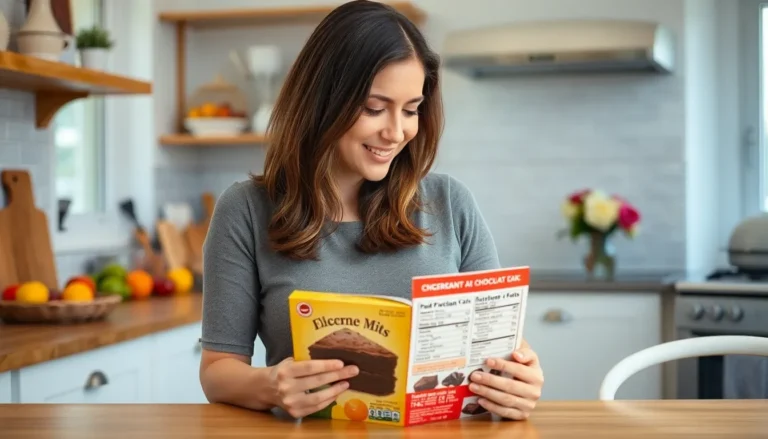Table of Contents
ToggleMaximalist design is like throwing a fabulous party in your living room where every guest is a bold color, eclectic pattern, and quirky accessory. Gone are the days of minimalism’s stark white walls and bare surfaces. Instead, it’s time to embrace the loud, the proud, and the unapologetically vibrant. Maximalism invites creativity to run wild, transforming spaces into visual feasts that tell a story and spark joy.
Imagine a room where each corner is packed with personality, where mismatched furniture and an explosion of textures work together in perfect harmony. It’s not just decor; it’s a lifestyle choice that says, “I’m here, I’m fabulous, and I’m not afraid to show it!” Whether it’s a riot of colors or an array of vintage finds, maximalist design celebrates abundance and individuality, making every home a unique masterpiece.
What Is Maximalist Design and Decor?
Maximalist design and decor thrives on abundance and individuality. This style prioritizes showcasing personal style through diverse elements like bold colors, intricate patterns, and an array of textures. Emphasis lies on layering, allowing various pieces to coexist harmoniously, creating a visually stimulating environment.
Maximalism contrasts sharply with minimalism, which favors simplicity and restraint. In maximalist spaces, eclectic collections of artwork, vintage furnishings, and unexpected accessories come together, resulting in a rich narrative. Each element contributes to a personalized atmosphere, reflecting the owner’s life experiences and preferences.
Patterns play a pivotal role in this design approach. Mixing florals with geometrics or stripes enhances visual interest. Color palettes can range from vibrant hues to subtle tones, allowing flexibility and creativity in expression. Accessories like statement lighting fixtures, oversized houseplants, and unique sculptures augment the overall ambiance, making each room a conversation starter.
Functionality remains important in maximalist spaces. While exuberance reigns, practical elements consider the space’s usability. Storage solutions become integral, providing a place for cherished items without compromising style. This thoughtful integration creates a balance between richness and functionality.
The maximalist aesthetic celebrates the beauty of chaos. By embracing complexity, it invites a sense of joy and warmth into the home. Each corner reveals surprises, allowing exploration and discovery. Such an environment fosters creativity, encouraging self-expression and individuality through design.
Key Characteristics of Maximalist Design

Maximalist design showcases a rich tapestry of elements that create vibrant, personalized spaces. This design style encourages bold expression through various characteristics.
Bold Color Palettes
Bold colors define maximalist spaces, offering endless possibilities for expression. This approach welcomes hues like deep reds, bright yellows, and lush greens. Vibrant combinations often appear in unexpected pairings, enhancing energy in each room. Walls may feature daring paint choices while furniture incorporates striking upholstery. Accessories like throw pillows and rugs can introduce additional pops of color, unifying the overall aesthetic. By employing contrasting shades, maximalist designs forge a lively atmosphere that energizes the home.
Eclectic Patterns
Eclectic patterns thrive in maximalism, adding depth and intrigue. Mixing elements like florals, geometrics, and stripes creates a dynamic visual landscape. Layering different patterns fosters harmony, allowing distinct styles to coexist peacefully. For instance, a floral armchair may find balance with a striped rug beneath it. Artworks featuring a mix of textures reinforce the theme with vivid narratives. This characteristic cultivates an engaging environment that reflects the owner’s personality and interests.
Layering Textures
Layering textures plays a critical role in achieving maximalist design. Soft textiles, hard surfaces, and natural elements come together to create complexity. Velvet cushions can complement leather sofas, while woven throw blankets add warmth. Additionally, items like wooden sculptures and metallic accents introduce dimensionality. This arrangement enhances sensory experiences, making spaces feel welcoming and inviting. Ultimately, thoughtfully layered textures create an immersive experience that captivates and engages.
Benefits of Maximalist Design and Decor
Maximalist design and decor bring numerous advantages that enhance living spaces. Vibrant expression thrives in maximalist environments, allowing individuals to showcase their personal style without constraints.
Personal Expression
Personal expression flourishes through maximalism, as every element tells a unique story. Each choice reflects the individual’s tastes, memories, and experiences. Art pieces, family heirlooms, and vibrant fabrics become key components, contributing to a visually rich narrative. Choices expand to include diverse materials and colors that might not fit traditional styles. Individuals can curate collections of items that resonate deeply with them, crafting a space that feels authentically theirs. Through maximalist decor, they transform rooms into emotional landscapes, celebrating creativity and individuality.
Creating a Unique Space
Creating a unique space is effortless with maximalism at the forefront. Personalization thrives in such environments, as every corner showcases distinct elements. Layered textures and bold patterns invite exploration and engagement. Unique furnishings and eclectic colors draw the eye, creating focal points that inspire conversation. The beauty of maximalism lies in its ability to integrate various styles harmoniously. It encourages adventurous approaches to design, pushing boundaries and defying conventional norms. Ultimately, people find joy in crafting environments that aren’t just livable but also exuberantly expressive, embodying their essence.
Tips for Achieving Maximalist Design and Decor
Maximalist design embraces bold choices and personal expression, creating energetic environments. Achieving this style involves a few key strategies.
Mixing and Matching Styles
Combining different design styles creates a distinctive maximalist environment. Pair vintage furniture with contemporary art to establish visual contrast. Vibrant colors and eclectic patterns promote harmony while celebrating diversity. Grouping various textures, like rustic wood with sleek metals, elevates the overall aesthetic. Consider layering geometric prints with floral motifs for added intrigue. Each curated piece contributes to a narrative that reflects individuality and taste, fostering an inviting atmosphere full of character.
Incorporating Statement Pieces
Highlighting statement pieces anchors the design and draws attention. Incorporate bold sculptures or large paintings to serve as focal points. Select unique lighting fixtures, like oversized chandeliers, to enhance both style and functionality. Position dramatic furniture, such as an ornate sofa or an artistic coffee table, in key areas to ignite conversation. Integrating quirky accessories, like vibrant vases or eye-catching textiles, adds layers of personality to the space. Each statement piece should resonate with the owner’s story, ensuring a cohesive yet dynamic look throughout the home.
Maximalist design offers a vibrant alternative to traditional decor, allowing individuals to express their unique personalities through bold choices. By embracing color, pattern, and texture, it transforms living spaces into captivating narratives that reflect personal stories and experiences. This style invites creativity and encourages the mixing of diverse elements, resulting in environments that are both visually stimulating and emotionally resonant.
In a world where individuality is celebrated, maximalism stands out as a powerful design philosophy. It champions the beauty of chaos and abundance, creating spaces that are not only functional but also full of life and warmth. Through maximalist design, anyone can curate a home that truly embodies their essence and invites exploration.








